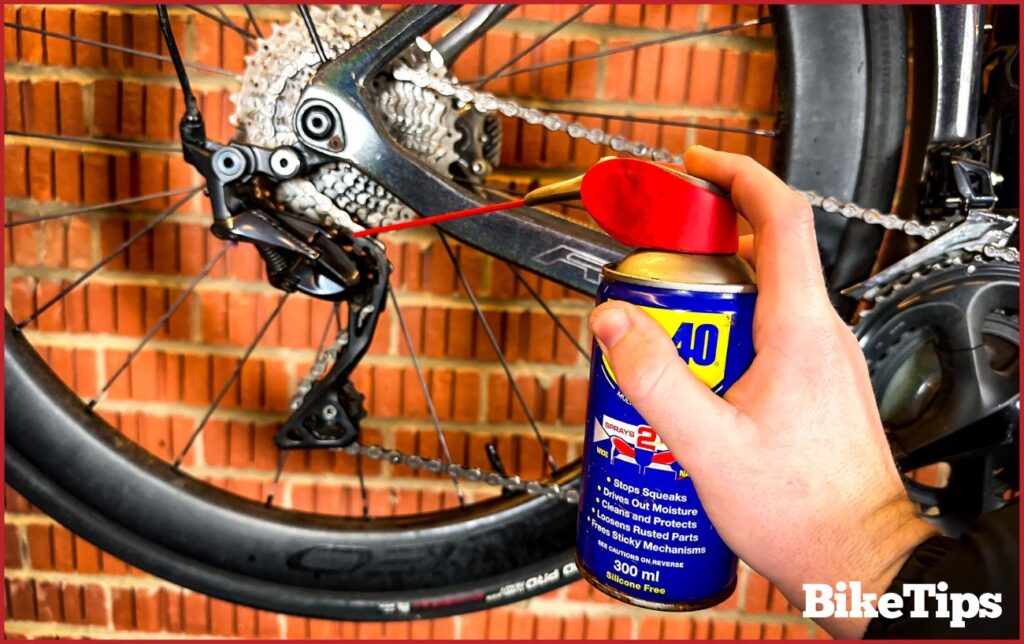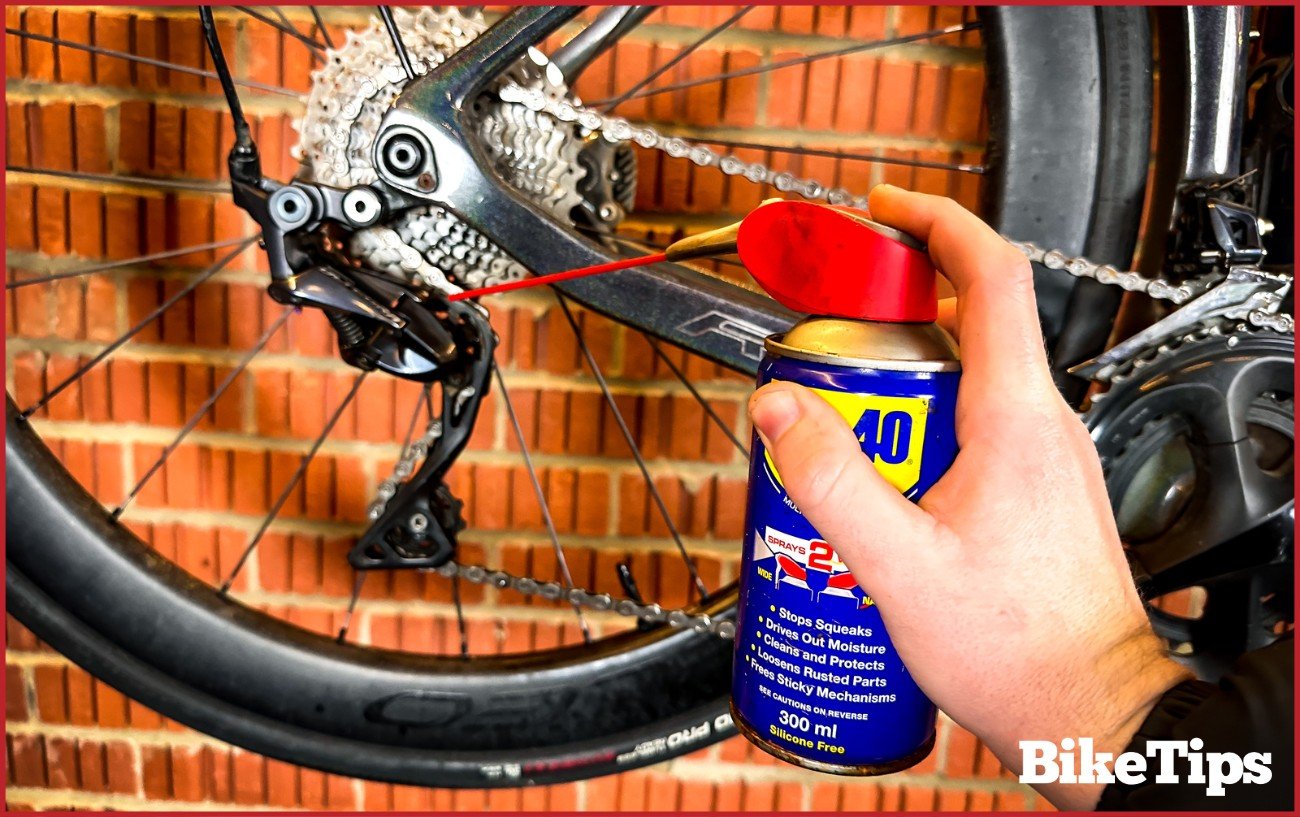
Is WD-40 Good for Bike Chains? The Truth About Chain Lubrication
Maintaining your bike chain is crucial for smooth rides and extending the lifespan of your drivetrain. A common question that arises among cyclists, from casual riders to seasoned pros, is: Is WD-40 good for bike chains? The short answer is: it’s complicated. While WD-40 has its uses, it’s not the ideal solution for lubricating your bike chain. Let’s delve into the details to understand why and explore better alternatives.
Understanding WD-40: A Multi-Purpose Product
WD-40 stands for Water Displacement, 40th formula. It was originally designed to prevent corrosion by displacing water. Its formula contains a blend of lubricants, solvents, and protectants. This composition makes it effective for various applications, such as loosening rusty bolts, preventing corrosion on metal surfaces, and even removing sticky residue. However, its properties aren’t perfectly suited for the demanding needs of a bicycle chain.
The Problem with Using WD-40 on Bike Chains
While WD-40 can initially make a bike chain appear cleaner and smoother, its primary function is not lubrication. Here’s why it’s generally not recommended:
- It’s a Solvent, Not a Lubricant: WD-40 is primarily a solvent. When applied to a bike chain, it effectively cleans and degreases it. While cleaning is important, WD-40 can strip away the existing lubricant, leaving the chain dry and vulnerable to wear.
- Short-Term Solution: Any lubrication provided by WD-40 is short-lived. It evaporates quickly, leaving the chain unprotected and prone to friction. This can lead to increased wear and tear on the chain and other drivetrain components.
- Attracts Dirt and Grime: The light, oily residue left by WD-40 can attract dirt and grime, creating an abrasive paste that further accelerates wear. A clean chain is important, but a properly lubricated chain is even more critical.
- Can Damage Rubber and Plastic Components: In some cases, WD-40 can damage rubber and plastic parts near the chain. Prolonged exposure might cause these materials to degrade or become brittle.
Therefore, while WD-40 might seem like a quick fix, its long-term effects on your bike chain can be detrimental. Using WD-40 on bike chains will require more frequent applications and can ultimately shorten the life of your chain.
Better Alternatives for Bike Chain Lubrication
Fortunately, there are numerous bike-specific lubricants designed to provide superior performance and protection for your chain. These lubricants are formulated to withstand the rigors of cycling, offering long-lasting lubrication and preventing premature wear. Here are some popular options:
- Dry Lube: Ideal for dry and dusty conditions, dry lubes contain Teflon or wax-based formulas that repel dirt and grime. They provide excellent lubrication without attracting contaminants.
- Wet Lube: Best suited for wet and muddy conditions, wet lubes are more viscous and resistant to water washout. They offer superior protection against corrosion and wear in challenging environments.
- Ceramic Lube: A premium option, ceramic lubes contain ceramic particles that reduce friction and provide exceptional durability. They offer long-lasting performance and are suitable for both dry and wet conditions.
- Chain Wax: Chain waxing involves completely immersing the chain in molten wax. It provides a very clean and efficient lubrication method, though it requires more initial effort.
When choosing a lubricant, consider the riding conditions you typically encounter. Dry lubes are great for dry climates, while wet lubes are better for rainy weather. Ceramic lubes offer a good balance of performance and durability for various conditions. Regularly lubricating your bike chain is essential for maintaining optimal performance and extending its lifespan. [See also: How to Clean Your Bike Chain Properly]
How to Properly Lubricate Your Bike Chain
Lubricating your bike chain correctly is just as important as choosing the right lubricant. Here’s a step-by-step guide:
- Clean the Chain: Before applying any lubricant, clean your chain to remove dirt, grime, and old lubricant. Use a chain cleaner or degreaser and a brush to scrub the chain thoroughly. Rinse with water and dry completely.
- Apply Lubricant: Apply the lubricant sparingly to the inside of the chain while rotating the pedals backward. Focus on applying the lubricant to the rollers, where the chain articulates.
- Wipe Off Excess: After applying the lubricant, use a clean rag to wipe off any excess lubricant from the outside of the chain. This prevents dirt from sticking to the chain and creating an abrasive paste.
- Repeat Regularly: Lubricate your chain regularly, depending on riding conditions and frequency of use. A good rule of thumb is to lubricate every 100-200 miles, or more often in wet or dusty conditions.
When WD-40 Might Be Useful (But Still Not Ideal)
While WD-40 is generally not recommended for lubricating bike chains, there are a few situations where it might be used as a temporary solution:
- Emergency Cleaning: If you’re caught in a situation where your chain is heavily soiled and you don’t have access to a proper chain cleaner, WD-40 can be used to quickly clean the chain. However, it’s crucial to re-lubricate the chain with a proper bike chain lubricant as soon as possible.
- Loosening a Stiff Chain: If your chain has become stiff due to rust or corrosion, WD-40 can help to loosen it up. Again, remember to follow up with a proper lubrication after using WD-40.
Even in these situations, it’s best to use WD-40 sparingly and always re-lubricate with a dedicated bike chain lubricant afterward. Consider WD-40 as a temporary fix, not a long-term solution. Proper chain maintenance involves regular cleaning and lubrication with products specifically designed for bicycle chains. Neglecting this can lead to premature wear and costly repairs. Using WD-40 on bike chains regularly without proper lubrication afterwards is a recipe for disaster.
The Importance of Regular Bike Chain Maintenance
Your bike chain is a vital component of your drivetrain, responsible for transferring power from your pedals to your wheels. Proper chain maintenance is essential for maintaining optimal performance, extending the lifespan of your drivetrain, and preventing costly repairs. Here are some key benefits of regular chain maintenance:
- Smoother Shifting: A clean and lubricated chain allows for smoother and more precise shifting. This improves your overall riding experience and reduces the risk of chain skipping or dropping.
- Reduced Wear and Tear: Proper lubrication minimizes friction between the chain and other drivetrain components, such as the cassette and chainrings. This reduces wear and tear, extending the lifespan of these parts.
- Improved Efficiency: A well-maintained chain transfers power more efficiently, reducing energy loss and allowing you to ride faster and with less effort.
- Prevention of Rust and Corrosion: Lubrication protects the chain from rust and corrosion, especially in wet or humid conditions. This prevents the chain from becoming stiff and prone to breakage.
- Cost Savings: By regularly maintaining your chain, you can prevent premature wear and costly repairs. Replacing a worn-out chain and cassette can be expensive, so investing in proper maintenance is a wise decision.
Ignoring chain maintenance can lead to a host of problems, including poor shifting, increased wear, reduced efficiency, and even chain breakage. Therefore, it’s crucial to make chain maintenance a regular part of your bike care routine. A clean and well-lubricated chain is a happy chain, and a happy chain means a happy rider. Remember, while the question “Is WD-40 good for bike chains?” might be tempting to answer with a simple yes, the reality is far more nuanced. Consider the long-term health of your bike and choose appropriate lubrication methods.
Conclusion: WD-40 and Your Bike Chain – Proceed with Caution
So, is WD-40 good for bike chains? While WD-40 can be useful for some cleaning and loosening tasks, it’s not a suitable replacement for dedicated bike chain lubricants. Its solvent properties can strip away existing lubrication, leaving the chain dry and vulnerable to wear. Furthermore, it attracts dirt and grime, accelerating the wear process. For optimal performance and longevity, invest in a bike-specific lubricant and follow a regular maintenance schedule. Your bike (and your wallet) will thank you. Remember to always wipe away excess lubricant after application. Neglecting proper lubrication can lead to significant problems down the road. The best practice is to clean and lubricate your chain regularly with products designed specifically for that purpose. While WD-40 has its uses, lubricating bike chains isn’t one of them. Proper maintenance ensures a smooth and efficient ride. Using WD-40 on bike chains can lead to premature wear. The key takeaway is to use the right tools for the job. So, next time you reach for that can of WD-40, think twice before spraying it on your bike chain. Your bike chain will thank you for it!

